Showing Spotlights 1729 - 1736 of 2790 in category All (newest first):
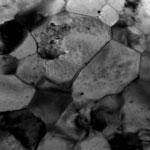 Thermoelectric materials therefore hold great promise for turning waste heat back into useful power and are touted for use in hybrid cars, new and efficient refrigerators, and other cooling or heating applications. Thermoelectric devices are energy converters - they are based on the fact that when certain materials are heated, they generate a significant electrical voltage; conversely, when a voltage is applied to them, they become hotter on one side, and colder on the other. But they have one big drawback: they are very inefficient. Efficient thermoelectric materials need to be very good at conducting electricity, but not heat - and that's the problem; these materials are not efficient enough to be practical. In most materials, electrical and thermal conductivity go hand in hand. So researchers have to find ways of boosting the performance of thermoelectric materials by separating the two properties.
Thermoelectric materials therefore hold great promise for turning waste heat back into useful power and are touted for use in hybrid cars, new and efficient refrigerators, and other cooling or heating applications. Thermoelectric devices are energy converters - they are based on the fact that when certain materials are heated, they generate a significant electrical voltage; conversely, when a voltage is applied to them, they become hotter on one side, and colder on the other. But they have one big drawback: they are very inefficient. Efficient thermoelectric materials need to be very good at conducting electricity, but not heat - and that's the problem; these materials are not efficient enough to be practical. In most materials, electrical and thermal conductivity go hand in hand. So researchers have to find ways of boosting the performance of thermoelectric materials by separating the two properties.
Jan 20th, 2011
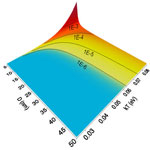 At the nanoscale, the properties of materials - mechanical, electrical, thermal, optical - often differ significantly from their bulk behavior. And while nanostructured and nanoengineered products are appearing in the marketplace, researchers are still trying to understand all aspects of materials properties of nanostructures and how they can be modified and controlled. Vacancies (also called Schottky defect) play a major role in the electrical and thermal transport as well as the mechanical behavior of materials. A vacancy is the simplest defect which can be created in a material - it corresponds to a lack of an atom in the lattice. New theoretical work calculates the size effect on the vacancy formation energy, the vacancy formation entropy and the vacancy concentration into nanomaterials through a top-down approach by using classical thermodynamics.
At the nanoscale, the properties of materials - mechanical, electrical, thermal, optical - often differ significantly from their bulk behavior. And while nanostructured and nanoengineered products are appearing in the marketplace, researchers are still trying to understand all aspects of materials properties of nanostructures and how they can be modified and controlled. Vacancies (also called Schottky defect) play a major role in the electrical and thermal transport as well as the mechanical behavior of materials. A vacancy is the simplest defect which can be created in a material - it corresponds to a lack of an atom in the lattice. New theoretical work calculates the size effect on the vacancy formation energy, the vacancy formation entropy and the vacancy concentration into nanomaterials through a top-down approach by using classical thermodynamics.
Jan 18th, 2011
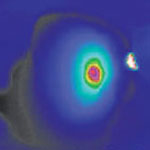 Chemotherapeutics generally show a delicate balance between maintaining a high enough dose to kill cancer cells while avoiding a dose so high that it causes severe toxic effects. One of the many promises of nanomedicine is a class of nanoscale drug delivery vehicles that can pinpoint cancer cells and deliver their tumor-killing payload right into cancer cells with high efficiency and no side effects. Based on a novel silica 'nanorattle' structure, a research team further extended their work to fabricate 'all-in-one' multifunctional gold nanoshells on silica nanorattles which combine remote-controlled photothermal therapy with chemotherapy. The results indicate that a combination of hyperthermia and chemotherapeutic agents is an encouraging approach to optimizing cancer therapy for the synergistic effects are greater than the two individual treatments alone.
Chemotherapeutics generally show a delicate balance between maintaining a high enough dose to kill cancer cells while avoiding a dose so high that it causes severe toxic effects. One of the many promises of nanomedicine is a class of nanoscale drug delivery vehicles that can pinpoint cancer cells and deliver their tumor-killing payload right into cancer cells with high efficiency and no side effects. Based on a novel silica 'nanorattle' structure, a research team further extended their work to fabricate 'all-in-one' multifunctional gold nanoshells on silica nanorattles which combine remote-controlled photothermal therapy with chemotherapy. The results indicate that a combination of hyperthermia and chemotherapeutic agents is an encouraging approach to optimizing cancer therapy for the synergistic effects are greater than the two individual treatments alone.
Jan 17th, 2011
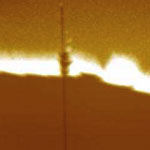 Ranging from electronic gadgets to medical applications, many nanomaterial-based devices have appeared in the market. One of the most important issues for these devices is their reliability and life-time of operation. A vital factor behind these issues is the structural stability of the nano-device - debonding of the nanomaterial from the substrate material being the single largest contribution for device degradation. In order to improve bonding between nanomaterials and their substrate, it is essential to understand and quantify the bonding mechanisms. A new nano-scratch technique developed by researchers in the U.S. could serve as the basis for a reliable quantification technique for interpreting nanomaterial-substrate bond strength.
Ranging from electronic gadgets to medical applications, many nanomaterial-based devices have appeared in the market. One of the most important issues for these devices is their reliability and life-time of operation. A vital factor behind these issues is the structural stability of the nano-device - debonding of the nanomaterial from the substrate material being the single largest contribution for device degradation. In order to improve bonding between nanomaterials and their substrate, it is essential to understand and quantify the bonding mechanisms. A new nano-scratch technique developed by researchers in the U.S. could serve as the basis for a reliable quantification technique for interpreting nanomaterial-substrate bond strength.
Jan 14th, 2011
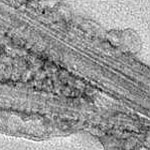 The toxicity issues surrounding carbon nanotubes (CNTs) are highly relevant for two reasons: Firstly, as more and more products containing CNTs come to market, there is a chance that free CNTs get released during their life cycles, most likely during production or disposal, and find their way through the environment into the body. Secondly, and much more pertinent with regard to potential health risks, is the use of CNTs in biological and medical settings. Some groups are using CNTs in research for vaccination as well as gene and cancer therapy. Here, the CNT applications are designed to interact directly with the immune system. Understanding the interplay between CNTs and immune proteins is therefore critical for both improving CNT applications in biology and medicine and avoiding potentially noxious immune responses.
The toxicity issues surrounding carbon nanotubes (CNTs) are highly relevant for two reasons: Firstly, as more and more products containing CNTs come to market, there is a chance that free CNTs get released during their life cycles, most likely during production or disposal, and find their way through the environment into the body. Secondly, and much more pertinent with regard to potential health risks, is the use of CNTs in biological and medical settings. Some groups are using CNTs in research for vaccination as well as gene and cancer therapy. Here, the CNT applications are designed to interact directly with the immune system. Understanding the interplay between CNTs and immune proteins is therefore critical for both improving CNT applications in biology and medicine and avoiding potentially noxious immune responses.
Jan 13th, 2011
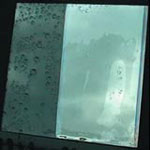 Self-cleaning, water and dirt-repellent coatings have differing properties, functional principles and manufacturing processes. Self-cleaning of the 'Lotus Effect' type has its basis in chemical-physical principles - these surfaces are characterised by a special roughness and are strongly water-repellent; in the ideal case, rain is sufficient for cleaning. 'Easy-to-Clean' materials, in contrast, have a particularly flat surface, which is both water and dirt-repellent on the basis of chemical aspects. Although the amount of mechanical cleaning may be reduced, they are not self-cleaning. A third form of self-cleaning is that based on photo catalysis by nano titanium dioxide. On such surfaces UV radiation produces oxygen radicals that decompose organic material, which in turn is removed in the rain by a water film.
Self-cleaning, water and dirt-repellent coatings have differing properties, functional principles and manufacturing processes. Self-cleaning of the 'Lotus Effect' type has its basis in chemical-physical principles - these surfaces are characterised by a special roughness and are strongly water-repellent; in the ideal case, rain is sufficient for cleaning. 'Easy-to-Clean' materials, in contrast, have a particularly flat surface, which is both water and dirt-repellent on the basis of chemical aspects. Although the amount of mechanical cleaning may be reduced, they are not self-cleaning. A third form of self-cleaning is that based on photo catalysis by nano titanium dioxide. On such surfaces UV radiation produces oxygen radicals that decompose organic material, which in turn is removed in the rain by a water film.
Jan 11th, 2011
 The OECD has just published a 111-page book on nanotechnology business that attempts to provide comprehensive, internationally comparable information on how different types of companies are affected by nanotechnology, how they use it in their innovative activities, how they acquire or develop relevant competences, as well as on the specific commercialization challenges they face. It also addresses the different role that new and small as well as larger companies will play in the commercialization of nanotechnology.The case studies provide qualitative insights into the commercialization of nanotechnology from the viewpoint of companies and thus complement studies which have relied primarily on publication and patent data or statistical surveys.
The OECD has just published a 111-page book on nanotechnology business that attempts to provide comprehensive, internationally comparable information on how different types of companies are affected by nanotechnology, how they use it in their innovative activities, how they acquire or develop relevant competences, as well as on the specific commercialization challenges they face. It also addresses the different role that new and small as well as larger companies will play in the commercialization of nanotechnology.The case studies provide qualitative insights into the commercialization of nanotechnology from the viewpoint of companies and thus complement studies which have relied primarily on publication and patent data or statistical surveys.
Jan 10th, 2011
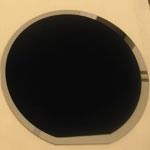 A key hurdle in realizing high-efficiency, cost-effective solar energy technology is the low efficiency of current power cells. In order to achieve maximum efficiency when converting solar power into electricity, ideally you need a solar panel that can absorb nearly every single photon of light - across the entire spectrum of sunlight and regardless of the sun's position in the sky. One way to achieve suppression of sunlight's reflection over a broad spectral range is by using nanotextured surfaces that form a graded transition of the refractive index from air to the substrate. Researchers in Finland have now demonstrated a scalable, high-throughput fabrication method for such non-reflecting nanostructured surfaces.
A key hurdle in realizing high-efficiency, cost-effective solar energy technology is the low efficiency of current power cells. In order to achieve maximum efficiency when converting solar power into electricity, ideally you need a solar panel that can absorb nearly every single photon of light - across the entire spectrum of sunlight and regardless of the sun's position in the sky. One way to achieve suppression of sunlight's reflection over a broad spectral range is by using nanotextured surfaces that form a graded transition of the refractive index from air to the substrate. Researchers in Finland have now demonstrated a scalable, high-throughput fabrication method for such non-reflecting nanostructured surfaces.
Jan 5th, 2011
 Thermoelectric materials therefore hold great promise for turning waste heat back into useful power and are touted for use in hybrid cars, new and efficient refrigerators, and other cooling or heating applications. Thermoelectric devices are energy converters - they are based on the fact that when certain materials are heated, they generate a significant electrical voltage; conversely, when a voltage is applied to them, they become hotter on one side, and colder on the other. But they have one big drawback: they are very inefficient. Efficient thermoelectric materials need to be very good at conducting electricity, but not heat - and that's the problem; these materials are not efficient enough to be practical. In most materials, electrical and thermal conductivity go hand in hand. So researchers have to find ways of boosting the performance of thermoelectric materials by separating the two properties.
Thermoelectric materials therefore hold great promise for turning waste heat back into useful power and are touted for use in hybrid cars, new and efficient refrigerators, and other cooling or heating applications. Thermoelectric devices are energy converters - they are based on the fact that when certain materials are heated, they generate a significant electrical voltage; conversely, when a voltage is applied to them, they become hotter on one side, and colder on the other. But they have one big drawback: they are very inefficient. Efficient thermoelectric materials need to be very good at conducting electricity, but not heat - and that's the problem; these materials are not efficient enough to be practical. In most materials, electrical and thermal conductivity go hand in hand. So researchers have to find ways of boosting the performance of thermoelectric materials by separating the two properties.
 Subscribe to our Nanotechnology Spotlight feed
Subscribe to our Nanotechnology Spotlight feed





